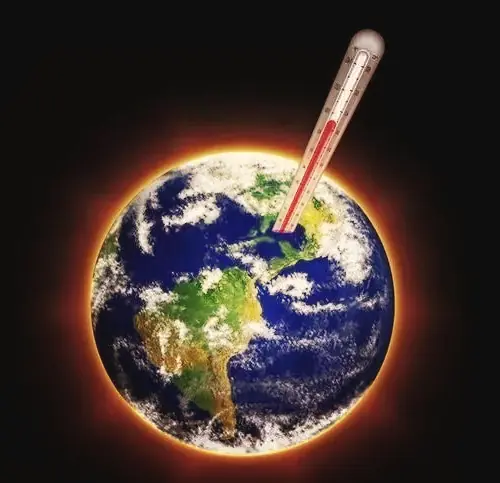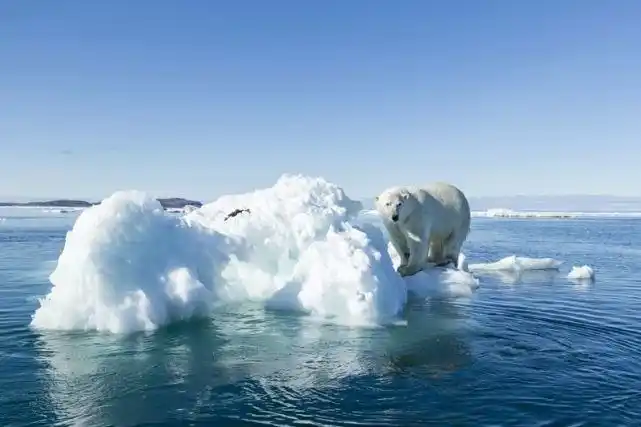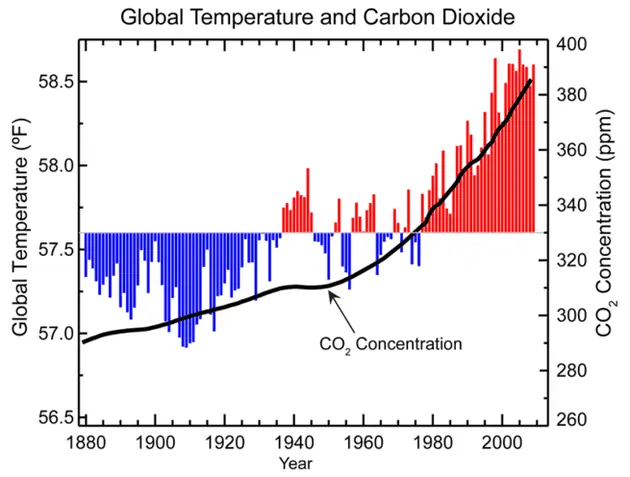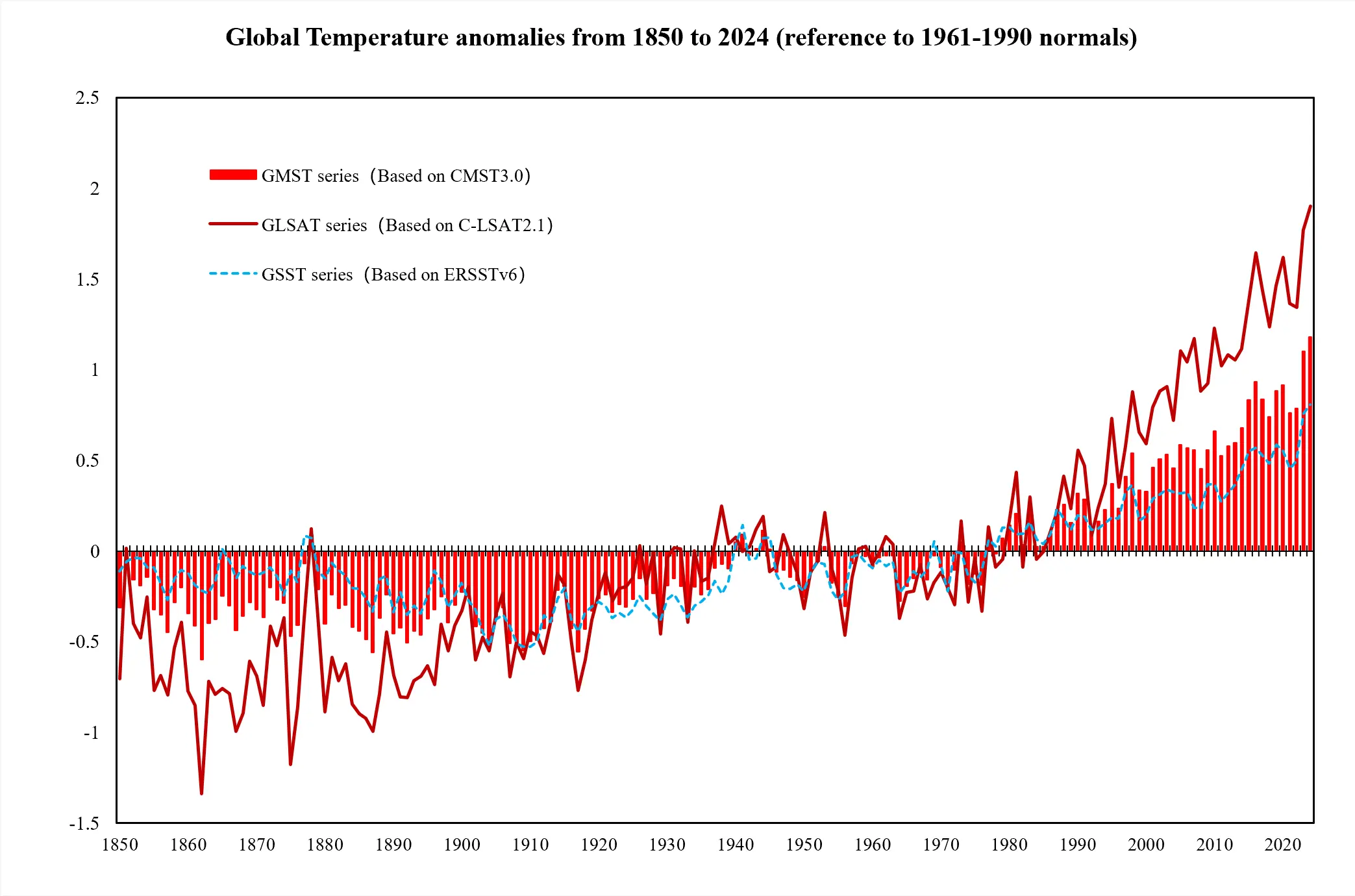Global temperature surge: scientific truth behind crisis and human self rescue path
1.55 degrees Celsius – this seemingly tiny number is plunging the Earth system into an unprecedented crisis.
In 2024, the global average temperature reached its highest level on record, 1.55 degrees Celsius higher than pre industrial levels (1850-1900). This warming has broken the record set in 2023, bringing the Earth closer to the key “threshold” of 2 degrees Celsius set by the Paris Agreement.
The latest warning from the World Meteorological Organization is even more worrying: between 2025 and 2029, there is an 80% chance of another ‘warmest year’, and the global average temperature will continue to hover at record levels. The planet we live on is sounding an alarm, and the sound of the alarm is becoming increasingly harsh.

01 Burning Earth: Multiple Drivers Behind Rising Temperatures
When scientists trace the causes of rising temperatures, greenhouse gas emissions from human activities constitute the most significant influencing factor. The level of carbon dioxide in the atmosphere has increased by 50% compared to the pre industrial era, and emissions continue to rise.
These invisible gases form an “insulation layer” in the atmosphere, trapping more heat within the Earth’s system.
Natural factors are also fueling the situation. The El Ni ñ o phenomenon that will occur in 2023 has become a powerful booster for global warming. This climate phenomenon triggers a chain reaction by altering the temperature distribution in the Pacific Ocean, ultimately leading to a significant increase in global average temperature.
What is even more alarming is that scientists have discovered a new climate feedback mechanism – the reduction of low-level clouds in the ocean. These clouds, which were originally able to reflect sunlight, become thinner or disappear, allowing the Earth to absorb more solar heat energy. Although shipping pollution control regulations have improved air quality, they have reduced the “seed” particles required for cloud formation, inadvertently exacerbating the warming cycle.

Other factors are also interacting: large-scale volcanic eruptions release greenhouse gases, forest fires release massive amounts of carbon dioxide, changes in solar activity cycles, and a reduction in aerosols with cooling effects in nature. These factors together weave a complex heating network.
02 Chain collapse: Climate dominoes have fallen
The butterfly effect of global warming is emerging in the global ecosystem. Extreme weather events cause severe damage worldwide: In 2023, disasters such as extreme high temperatures, heavy rainfall, floods, and rapidly strengthening tropical cyclones will occur frequently.
Drought has led to food shortages, while floods and wildfires have forced about 800000 people to be displaced, the highest number on record since 2008.
The cryosphere is melting at an unprecedented rate. Between 2015 and 2024, the average annual sea level rise is 4.7 millimeters, which is more than twice the rate from 1993-2002 (2.1 millimeters per year). The melting of polar ice caps not only threatens coastal areas, but may also disrupt the entire ocean circulation and have global climate impacts.
The ocean system has also issued an alarm. The seawater temperature has set a new record, leading to an increase in the level of seawater acidification. This chemical change is damaging corals, shellfish, and phytoplankton, which are the cornerstone of the marine food web, threatening global fisheries and the food supply for billions of people.
The United Nations Intergovernmental Panel on Climate Change warns that 14% of terrestrial species worldwide face a “very high” risk of extinction when temperatures reach 1.5 degrees Celsius. A temperature increase of 2 degrees Celsius will put 410 million people at risk of severe drought induced water scarcity, and 80 million people at risk of hunger. The biodiversity network of the Earth is being torn apart by high temperatures.

03 Last Window: Human Self Help Roadmap
Faced with an imminent crisis, energy transformation has become the most critical breakthrough point. The Secretary General of the World Meteorological Organization, Celeste Saul, emphasized the need to accelerate action to significantly reduce greenhouse gas emissions and accelerate the transition to renewable energy. Eliminating fossil fuels and promoting electric and biofuel vehicles have become the core options for technological response.
The protection and restoration of ecosystems are equally urgent. Forests, as the ‘green lungs’ of the Earth, play a crucial role in temperature control due to their ability to absorb carbon dioxide. Tree planting and afforestation activities are being widely carried out globally, attempting to mitigate climate change by rebuilding ecological barriers.
The international cooperation mechanism is a key platform for addressing global challenges. From the Paris Agreement to the UAE Consensus, the International Climate Conference provides an opportunity for countries to reach consensus on emission reduction targets, technology sharing, financial support, and other aspects.
UN Secretary General Guterres calls for “groundbreaking action”, emphasizing that unilateral efforts are no longer sufficient to address systemic crises.

Adaptation measures need to be implemented simultaneously. Cities can invest in building cooling facilities to cope with heatwaves, while coastal communities need to build new protective infrastructure or consider relocation. These adaptation measures require significant financial support, but compared to the losses caused by inaction, these investments are necessary and economical.
Every 0.1 degrees Celsius increase in temperature is of great significance. Even if a single year’s warming exceeds 1.5 degrees Celsius, it does not mean that the threshold of the Paris Agreement has been officially exceeded, but the extreme weather and ecological impacts it has caused are irreversible.

At the edge of the Greenland ice sheet, rivers formed by glacier meltwater are rushing towards the ocean at an unprecedented speed. Scientists estimate that if the Greenland and western Antarctic ice sheets completely melt, global sea levels will rise by 13 meters.
In the Pacific island nation of Tuvalu, the government has begun planning a relocation plan for the entire country – their land is being swallowed up inch by inch by rising seawater.
The voice of Ko Barrett, Deputy Secretary General of the World Meteorological Organization, was heavy and clear: ‘We have just experienced the hottest decade on record. There is no sign of a pause in the coming years.’. The window for humanity to address the climate crisis is closing, but it is not yet fully closed.
This race against time requires the joint participation of every country, city, and individual in the world. Whether we can reverse our course before the critical point arrives depends on our current actions.